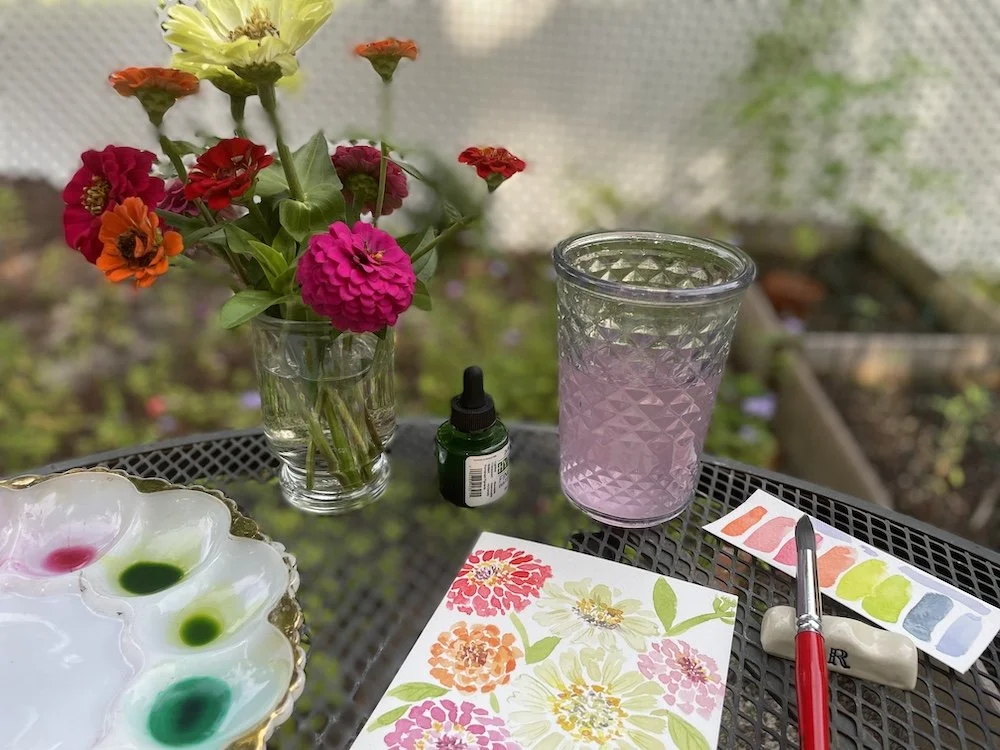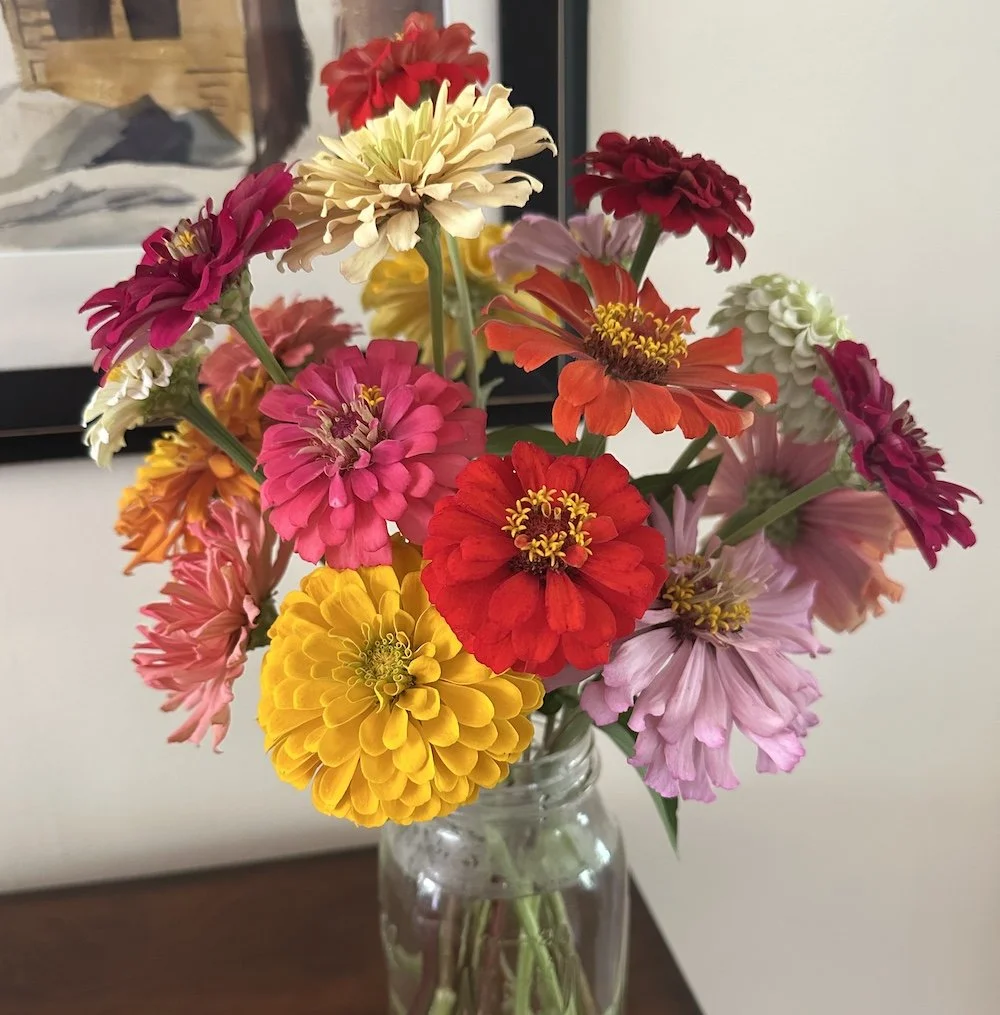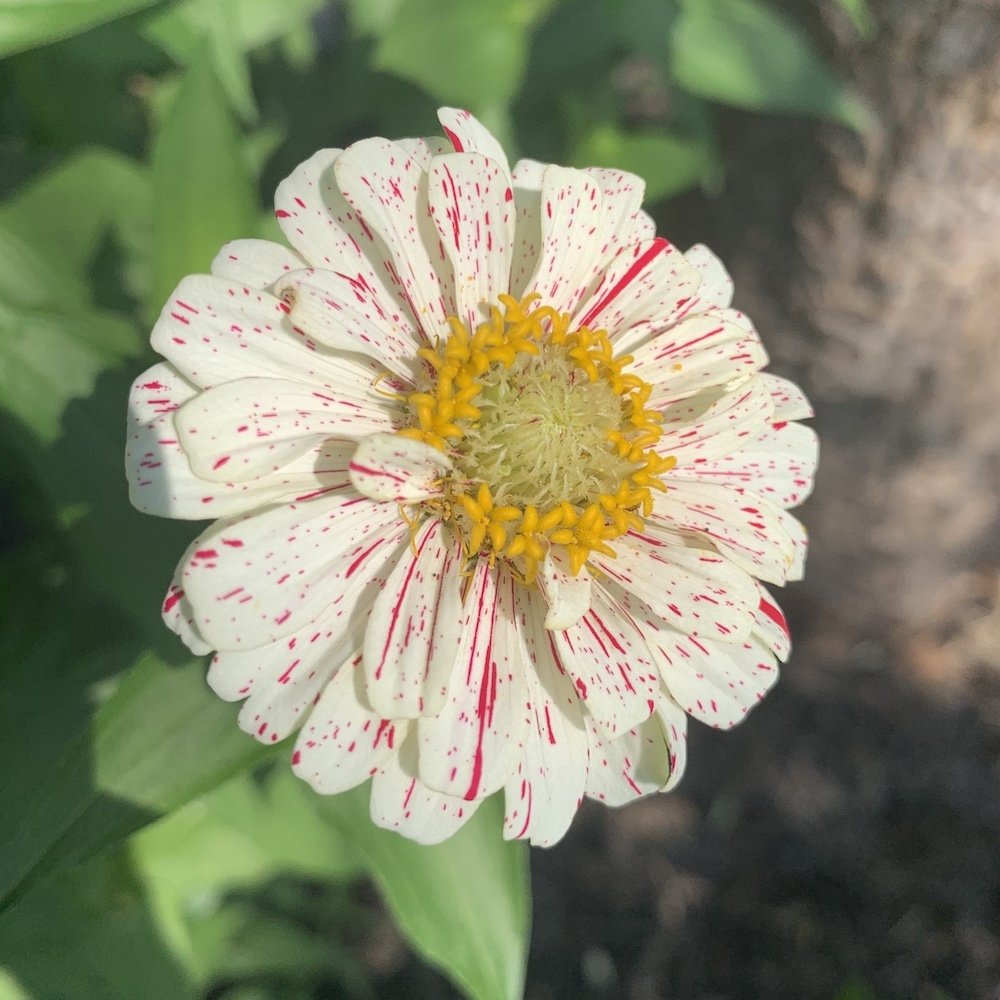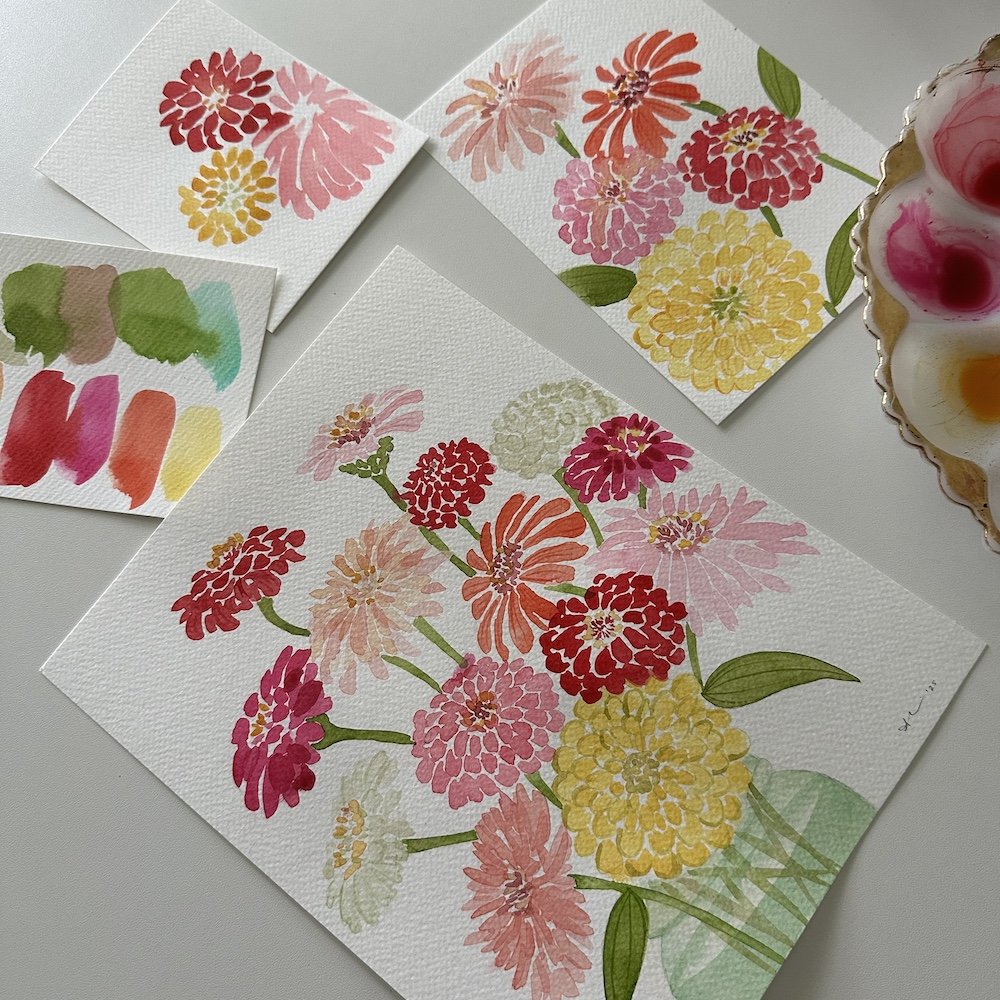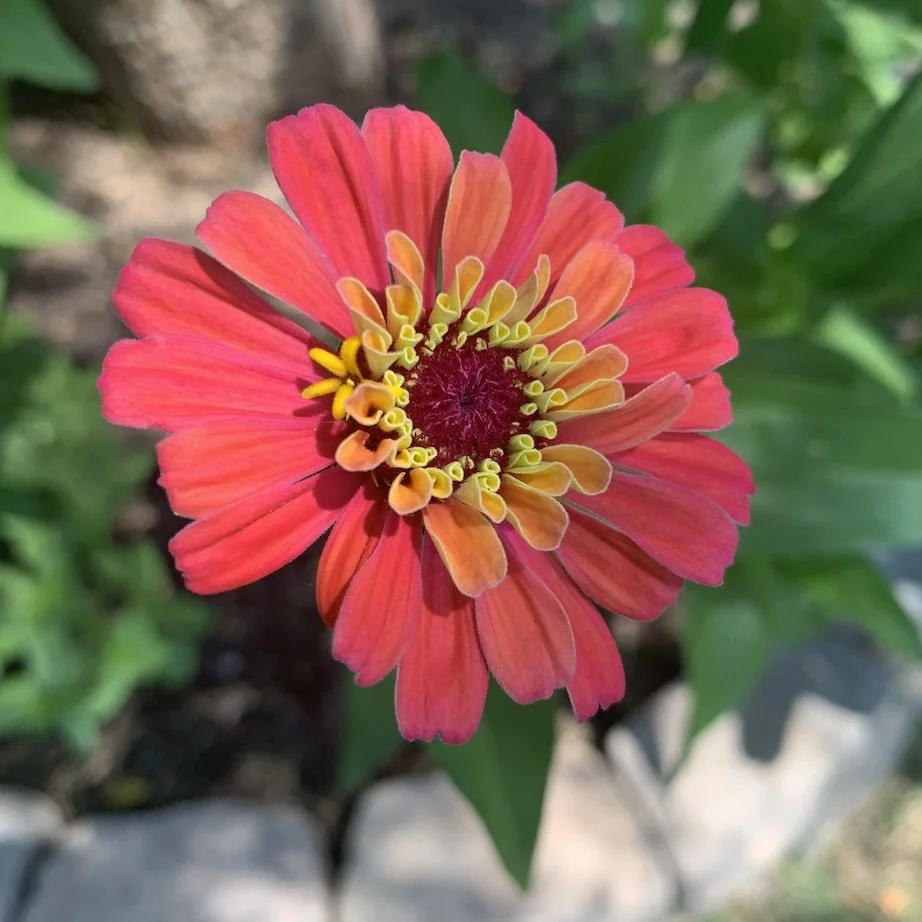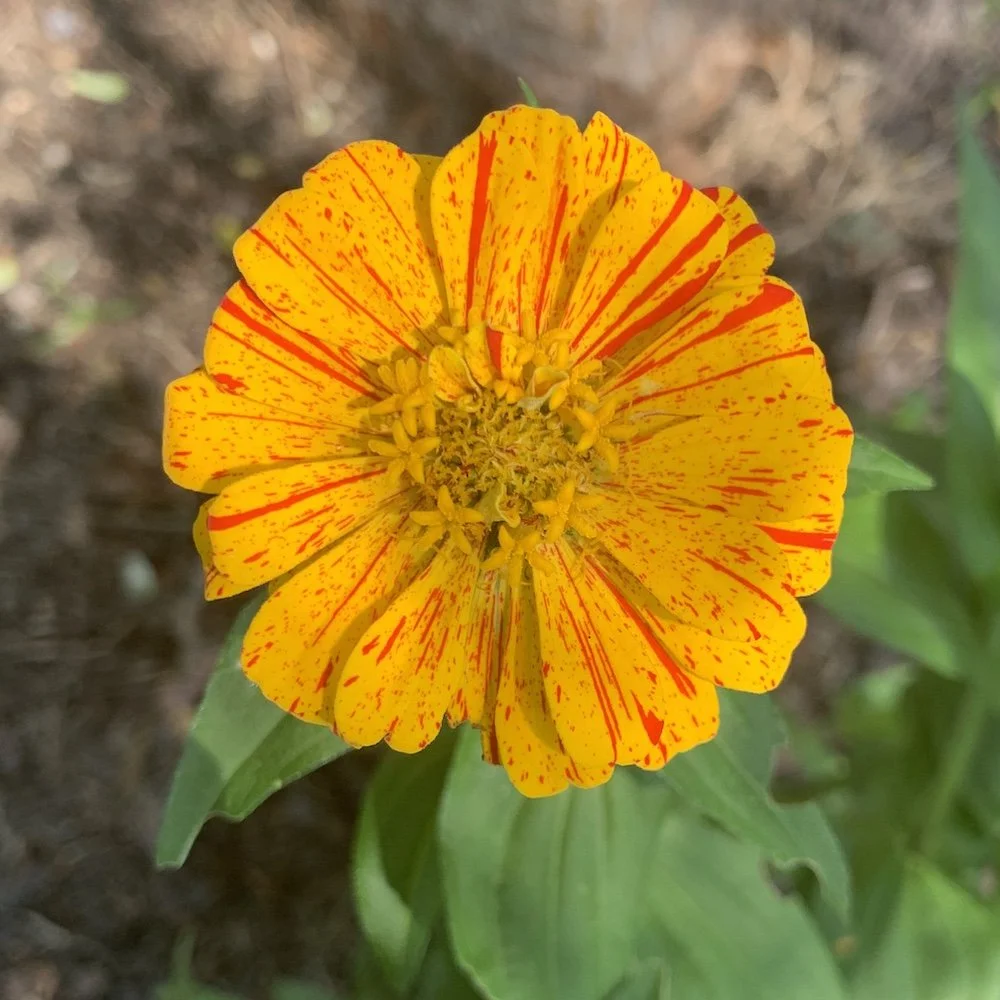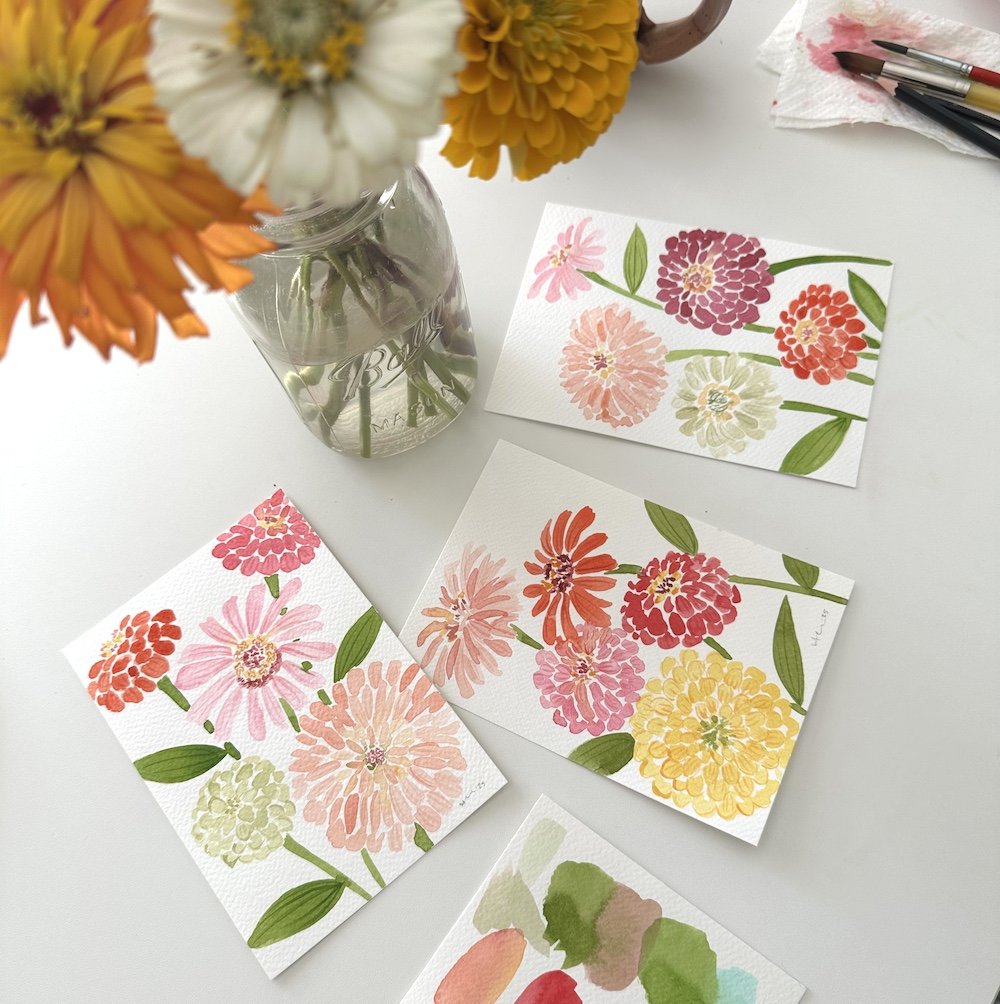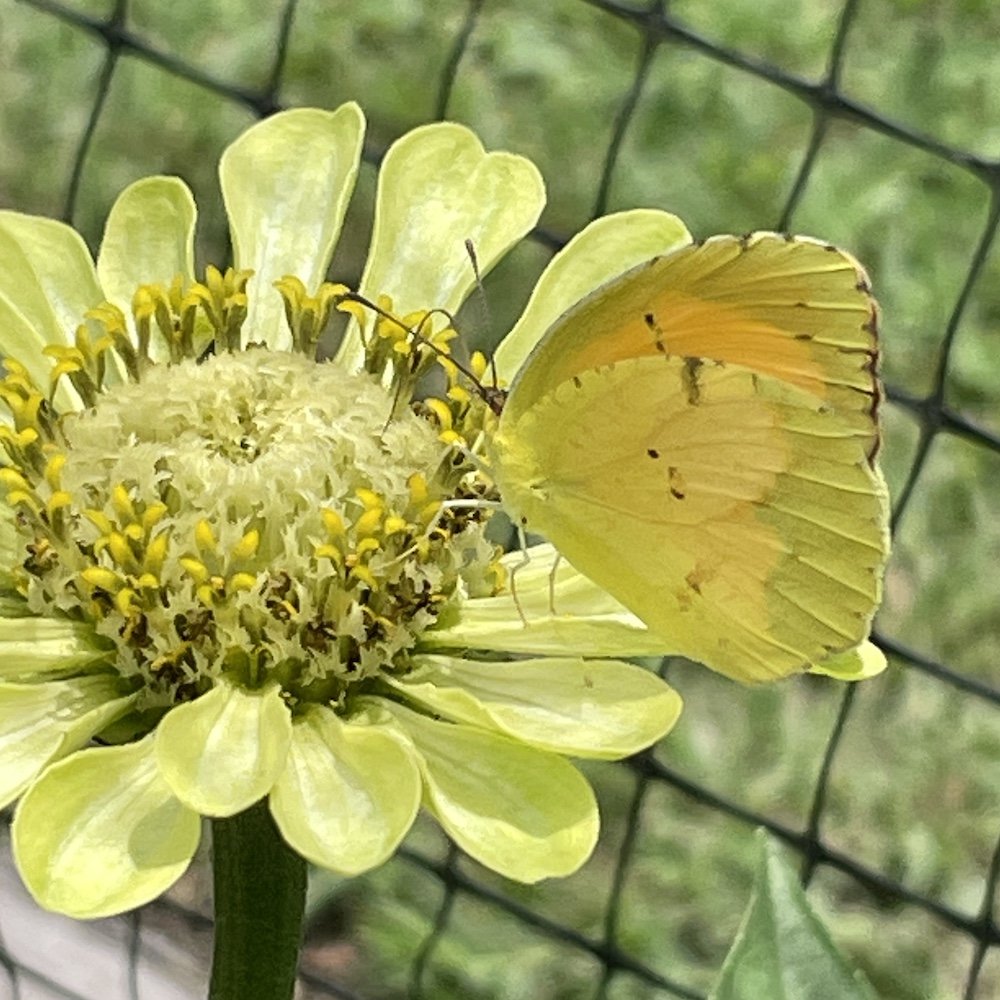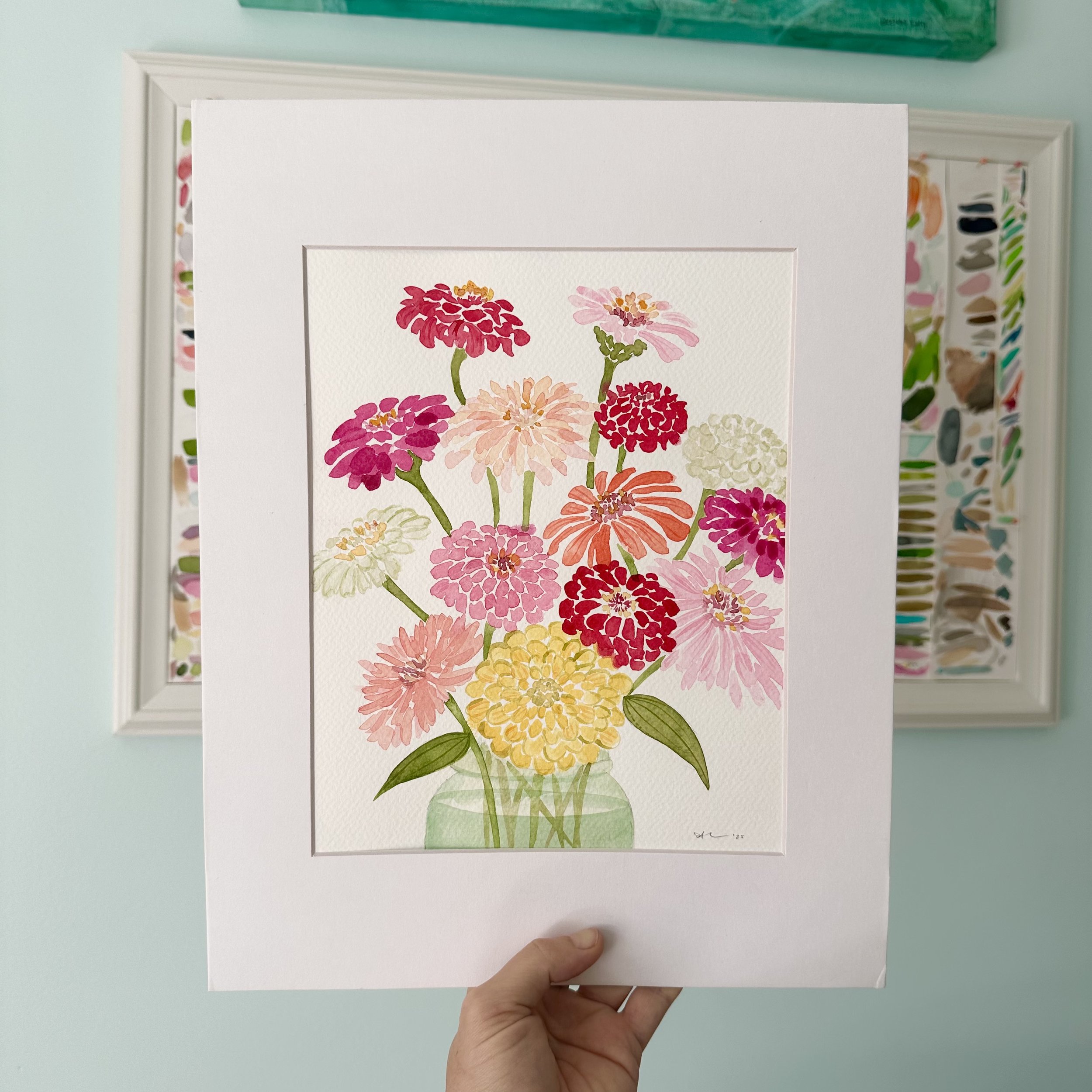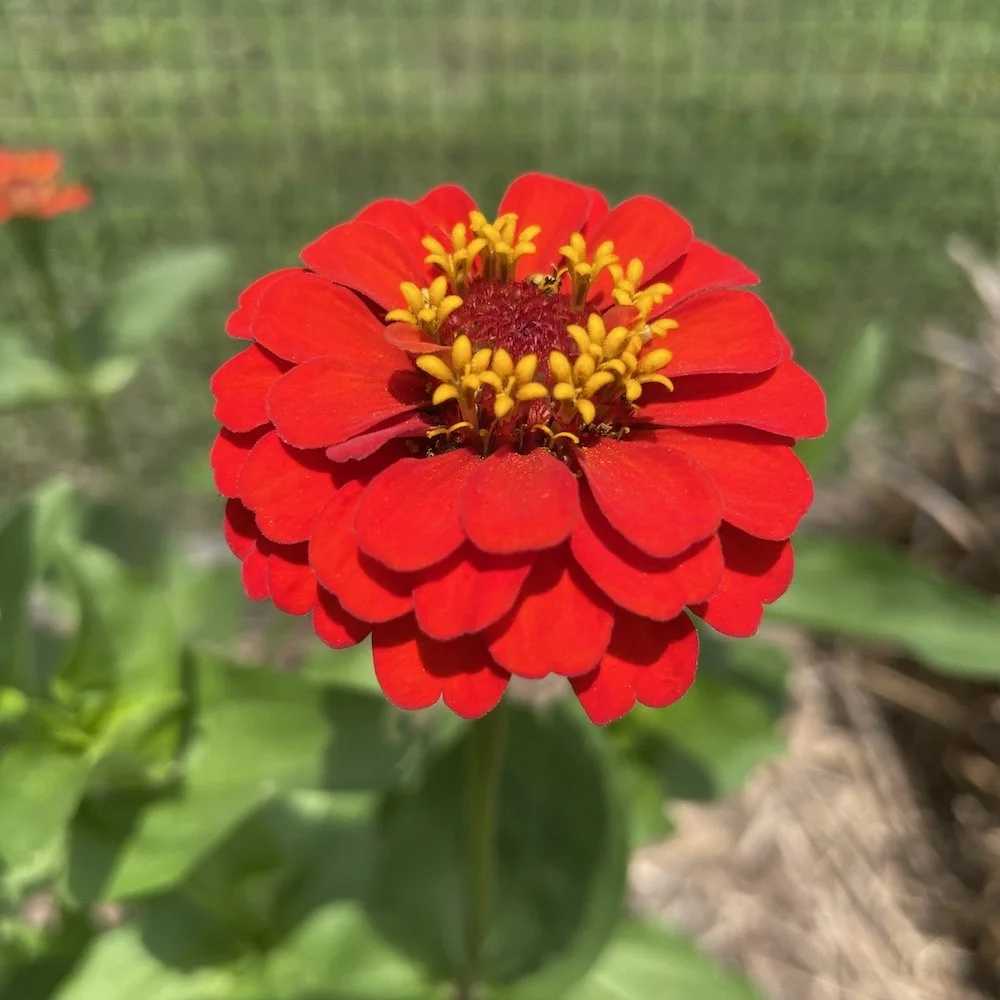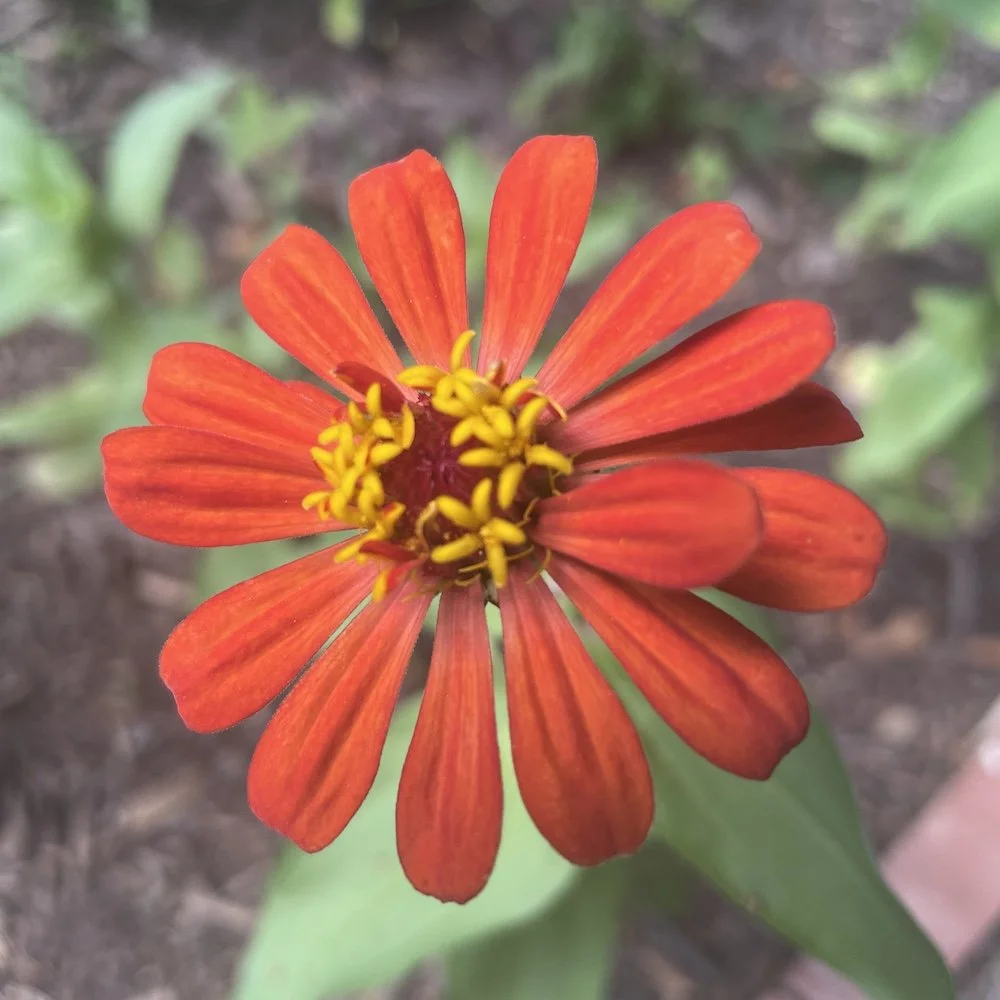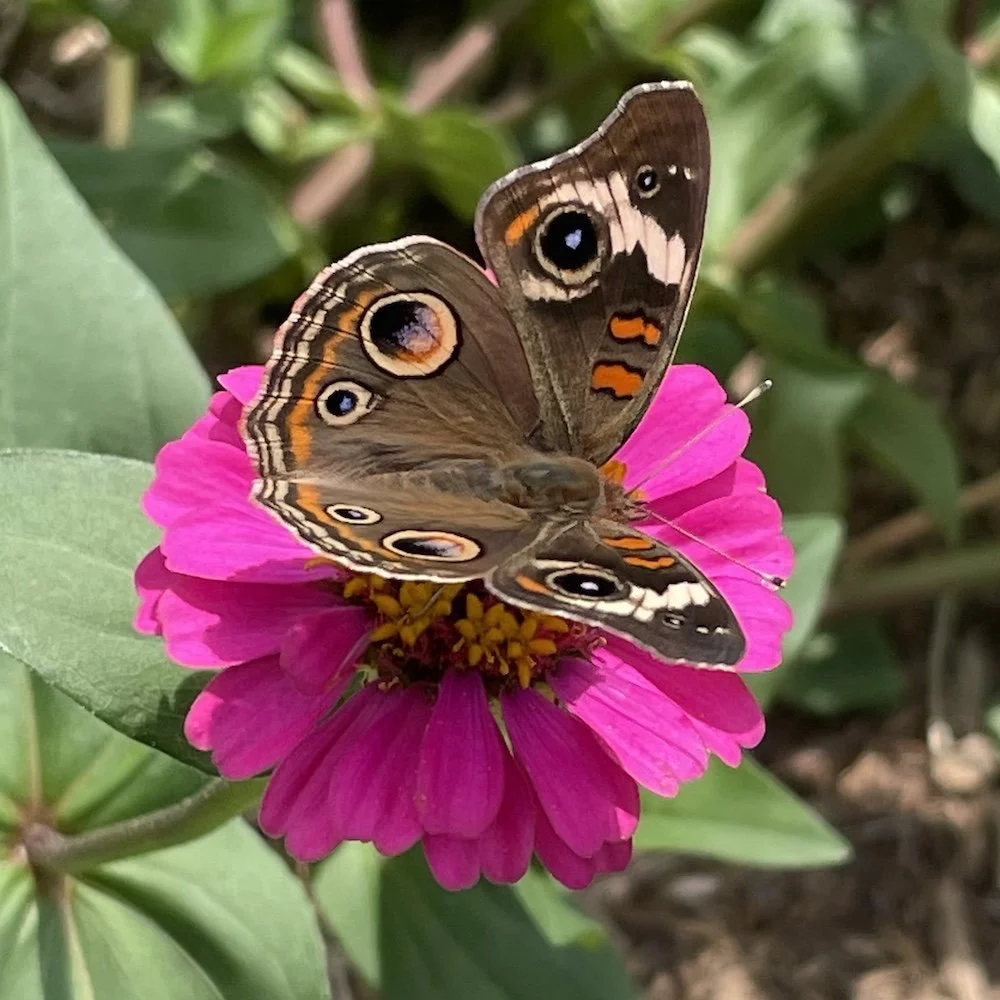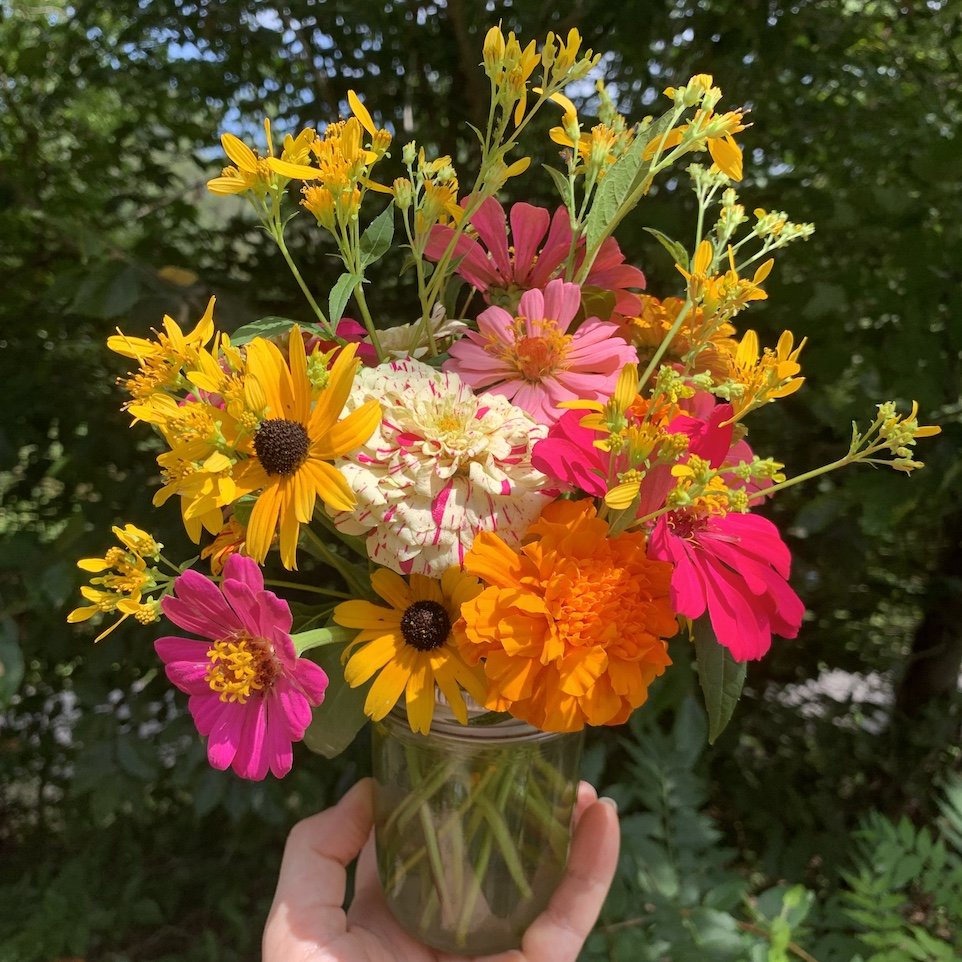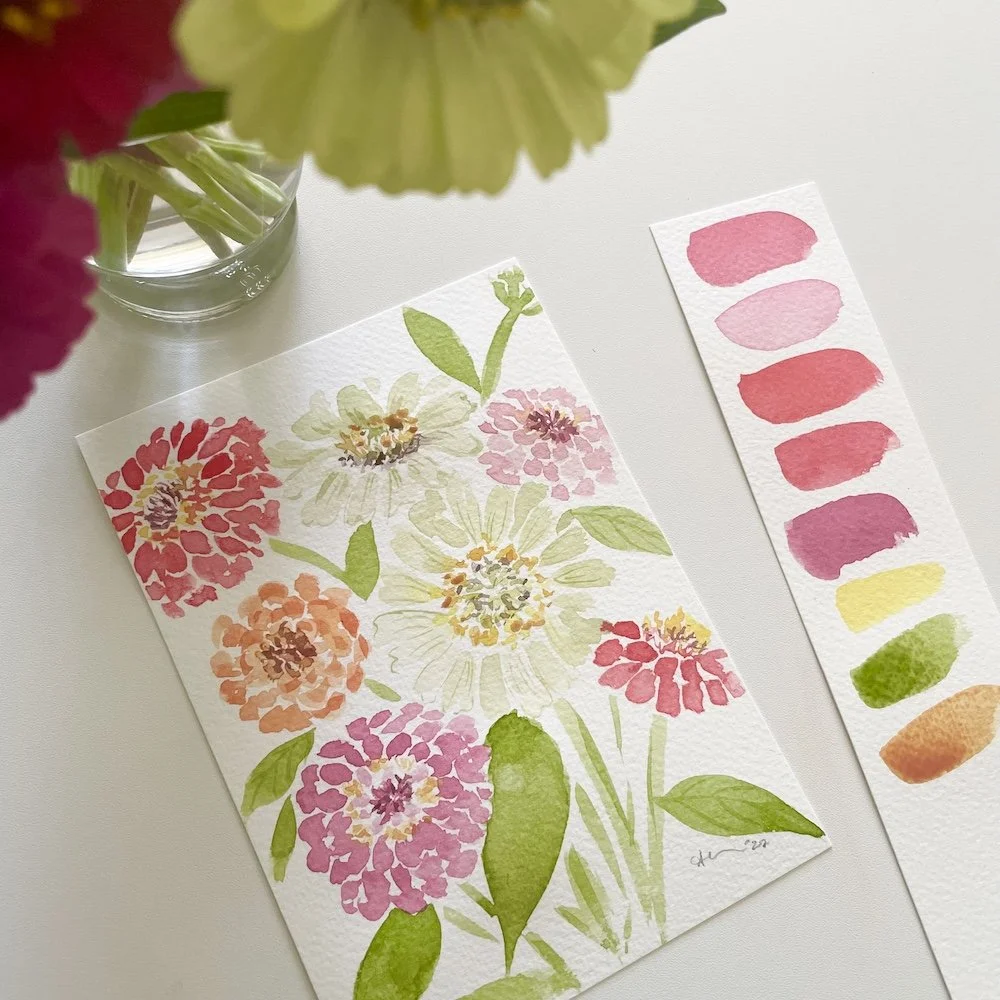What is it about Zinnias?
Zinnias from Sunshine Farm and Animal Sanctuary, Wendell, NC
It’s Zinnia season! There’s just something about these little pieces of magic in the garden. Several times over the past month, a few folks have said to me, “I just love zinnias, they are one of my favorite flowers.” Two years ago, I was scared to tackle painting zinnias in a looser style. They felt too complicated and daunting with their dense layers of petals, and antithetical to the flow-y nature of the watercolor medium itself. But one day, I picked some from the yard and just started painting. After just a few strokes, I was hooked. Zinnias’ broad variety of textures and colors became more and more inspiring with each bloom that I painted.
I love examining zinnias from different angles. The shapes you can find looking at this in profile versus head on create lots of variety for a painting session. One of my favorite parts of the zinnia is the flower’s underside. Underneath the petals, youll find layers elegantly placed green scallops along the flower’s base.
Here are some facts about what make zinnias extra special members of the garden family:
Zinnias are fast growers! With minimal sowing effort, planting these annuals in well-draining soil and plenty of sunlight will have them sprouting in just a few short weeks.
Zinnias come in a vast variety of colors. Green envy (sort of a light lime color) is among my favorites as well as Candy cane (the white zinnias with specks of red hold up to their name). Contemporary zinnia flowers come in a wide range of colors, such as red, pink, purple, yellow, orange, white, green, and vibrant multicolored blends. Their blooms vary in size, from petite 1-inch flowers to large varieties reaching 7 to 8 inches in diameter. They also come in singles, featuring a one row of petals and fuller blooms called doubles or double doubles that resemble a dahlia.
Zinnias are heat and dry condition warriors. Wetter summers are actually a hinder to their growth
Zinnias are pollinator magnets, Butterflies and hummingbirds love them
Zinnias were named in honor of Dr. Johann Gottfried Zinn, a German botanist who first wrote about them in the 1700s.
The best time to cut zinnias for a bouquet is in the morning when it's cooler and the flowers are nice and hydrated. Use clean, sharp scissors or pruners to snip the stems just above a leaf node (where two leaves grow across from each other). This helps new buds grow and keeps the plant looking tidy. Pick flowers whose centers are just starting to open to get the longest vase life. Before putting them in water, strip off any leaves that would sit below the waterline. Change the water every couple of days and keep the vase clean to help your arrangement last longer.
https://www.chicagobotanic.org/plantinfo/smartgardener/zinnias_hardest_working_flower_summer_garden
https://hgic.clemson.edu/factsheet/how-to-grow-zinnias-the-best-varieties-care-tips/

